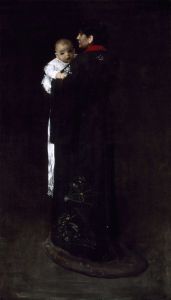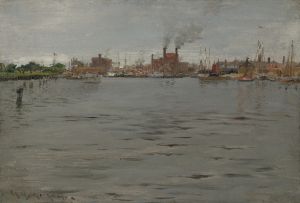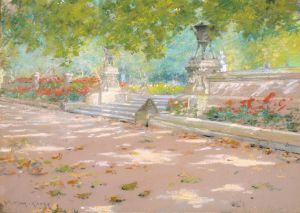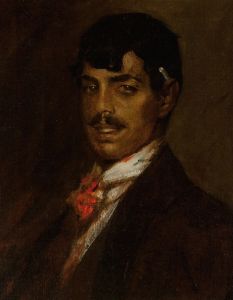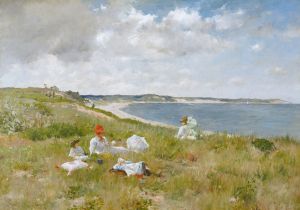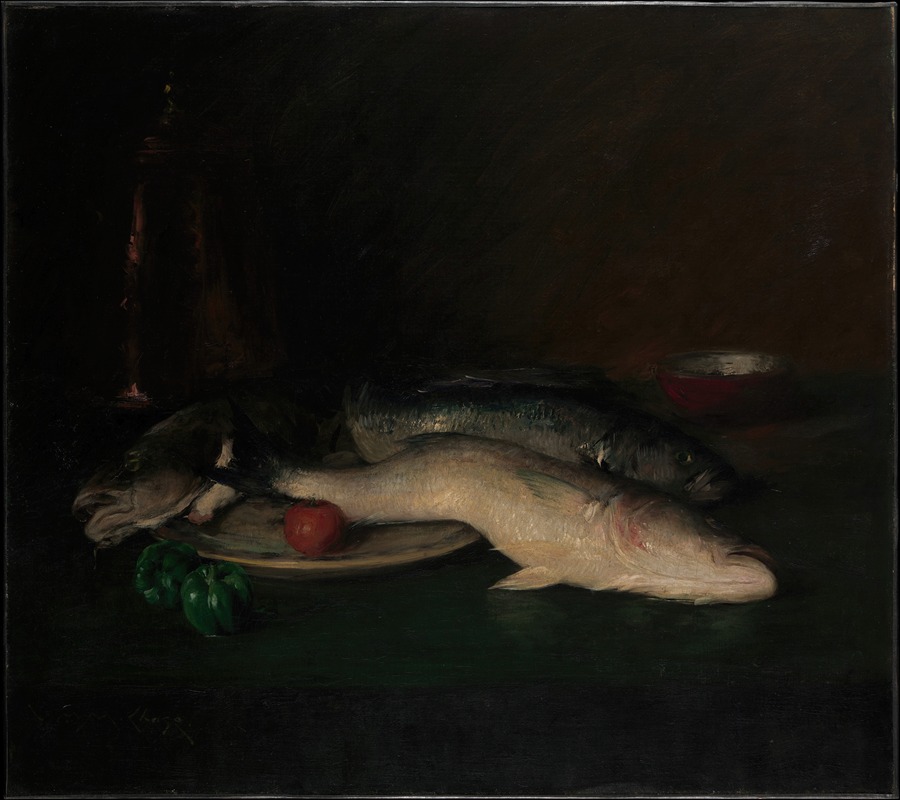
Still Life; Fish
A hand-painted replica of William Merritt Chase’s masterpiece Still Life; Fish, meticulously crafted by professional artists to capture the true essence of the original. Each piece is created with museum-quality canvas and rare mineral pigments, carefully painted by experienced artists with delicate brushstrokes and rich, layered colors to perfectly recreate the texture of the original artwork. Unlike machine-printed reproductions, this hand-painted version brings the painting to life, infused with the artist’s emotions and skill in every stroke. Whether for personal collection or home decoration, it instantly elevates the artistic atmosphere of any space.
William Merritt Chase was an influential American painter known for his versatility and contributions to American art in the late 19th and early 20th centuries. Among his diverse body of work, "Still Life; Fish" stands out as a notable example of his skill in still life painting.
Chase was born on November 1, 1849, in Williamsburg, Indiana, and he became a prominent figure in the American art scene. He studied at the National Academy of Design in New York and later in Europe, where he was influenced by the European masters and the burgeoning Impressionist movement. Chase's exposure to different styles and techniques greatly enriched his artistic repertoire, allowing him to experiment with various genres, including portraiture, landscapes, and still lifes.
"Still Life; Fish" is a testament to Chase's ability to capture the subtleties of light, texture, and form. In this painting, Chase employs a realistic approach to depict a simple yet compelling arrangement of fish. The composition is carefully balanced, with the fish laid out on a flat surface, possibly a table or a slab, against a neutral background. The artist's attention to detail is evident in the meticulous rendering of the fish's scales and the play of light on their slippery surfaces.
Chase's use of color in "Still Life; Fish" is particularly noteworthy. He employs a muted palette, dominated by silvery grays and blues, which enhances the realism of the fish and creates a harmonious composition. The subtle variations in tone and hue reflect Chase's keen observational skills and his ability to convey the natural beauty of his subjects.
The painting also demonstrates Chase's mastery of light and shadow. The way light falls on the fish, casting soft shadows and highlighting their contours, adds depth and dimension to the composition. This skillful manipulation of light is a hallmark of Chase's work and contributes to the lifelike quality of the painting.
Chase was known for his ability to elevate everyday subjects to the level of fine art, and "Still Life; Fish" is a prime example of this talent. By focusing on a simple subject and rendering it with precision and care, Chase invites viewers to appreciate the inherent beauty in ordinary objects. This approach aligns with the broader still life tradition, which often seeks to find beauty and meaning in the mundane.
Throughout his career, Chase was a dedicated teacher and mentor, influencing a generation of American artists. He founded the Chase School, later known as the Parsons School of Design, and taught at the Art Students League of New York. His impact on American art extended beyond his own work, as he played a crucial role in shaping the direction of art education in the United States.
In summary, "Still Life; Fish" by William Merritt Chase exemplifies the artist's technical skill, attention to detail, and ability to find beauty in everyday subjects. Through his masterful use of color, light, and composition, Chase transforms a simple arrangement of fish into a work of art that continues to captivate viewers. His contributions to American art, both as a painter and educator, have left a lasting legacy that continues to be celebrated today.






